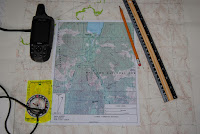Addressing Hearing Loss
Some families play board games; some take an annual trip to
the beach. Our family traditions were a
little bit different. I completed my
first summit of the 14,411-foot Mount Rainier when I was 12 years old – something
normal by my family’s standards. Some of you may know my uncle, Jim Whittaker,
the first American to summit Mount Everest. Or my dad, Lou Whittaker, the
founder of Rainier Mountaineering.
Along with a love of climbing, I inherited from my family a deep
passion for life and adventure. As my father was famed to have said, “When it
comes to dying, I want to know what it is like to have really lived.” I have
translated that spirit into everything I do in life – from mountaineering, to
making music, to filmmaking.
About ten years ago, though, my wife Sarah started to notice
that my love of adrenaline may not have been the only thing I’d inherited from
my dad – it seemed my hearing, like his, was starting to go.
At the time, I didn’t really notice any of the effects of my
declining hearing, so I pretty much waved it off. And, then, it become
noticeable. Within a few years, it was more often than not that I had to ask a
client in climbing school to repeat a question. It was becoming a bit more
difficult to find the exact right sound when I was recording with my band.
Between my dad’s hearing loss and my lifelong love of loud
music and power tools – it wasn’t a huge shock I had found myself at this
point. But I can’t lie – I was not thrilled at the thought of having to get a
hearing aid. My reluctance was not because of any stigma attached to hearing
aids, but more so because of the hassle of setting them up. I knew you have to
go into the audiologist repeatedly to get them working just right. Even then, with
all of the various environments I am in, I knew there was no way that one
setting would work across the board. To add to
my hesitation, in addressing my dad’s hearing loss, it didn’t seem like his
hearing aids had helped him at all. Particularly in crowded environments, his
hearing aids just amplified sound, making the environment overwhelming.
I didn’t want that, especially since I was still regularly
climbing and guiding climbs up the mountain. If a hearing aid just picked up
and amplified the sound of the wind, it wouldn’t do much good for me in that
setting – one of the environments where my hearing was the most important to
me. So, for that reason, I kept putting off addressing my hearing loss.
That was, until last year, when I was introduced to the
ReSound LiNX. I had mentioned the idea to my audiologist before but it wasn’t
yet in existence – the idea of being able to easily adjust the audio settings
of a hearing aid on my own. The LiNX was the first ever Made for iPhone hearing
aid, which meant it communicated directly with your phone and could be adjusted
wirelessly through an app.
As an audio engineering geek,
I was hooked right away. Through the ReSound Smart app, I could use my iPhone
to adjust my hearing aids’ volume, bass and treble, and direction of sound
amplification. Calls and music were streamed directly through my phone to the
aids. The first day I was fitted with the ReSound LiNX, I remember hearing the
sounds of rain squelch under my shoes, and my shoes subsequently squeaking on the
tile when I got home – sounds I hadn’t even realized I was missing out on.
Now – wearing ReSound’s latest, the LiNX2 – I can
hear a pebble falling on the mountain. My clients tell me my hearing is bionic.
Sometimes I think about my decision to address my hearing loss. Like any other
challenge in life, I took it head on, now sporting a bright red hearing aid
behind my ears. And, as someone who isn’t ready to slow down at all, I sure am
happy that I did.





















